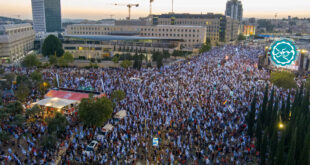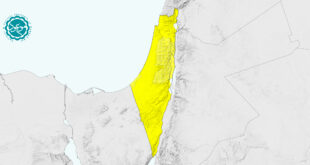Articles: Iran’s missile maneuver in Ain al-Assad / Report on the deterrent effect of Iranian missiles
The missile strike on Ain al-Assad showed that if the power for Americans has the consequences of totalitarianism, Iran’s missiles are ready to prevent those complications.
Fars News Agency Political Group – In the political-military literature, deterrence refers to the military defensive power that deters the enemy from thinking of attacking. This concept is not only defined in the political and security system, but it also has biological and neurological dimensions.
In other words, any military must be able to defend itself against the destructive power of rivals and opponents to survive. Today, psychologists liken the power to a kind of medicine that has many side effects, such as impaired empathy, arrogance, instant decision making, and totalitarianism. “A kind of tumor that ends by killing a sense of empathy for the victim,” says Henry Adams, a historian describing power.
He has more metaphorical meaning in mind than medicine. But that description is not very different from what Dacher Keltner, a professor of psychology at Berkeley University, came up with after years of field and laboratory experiments. During his two decades of study, he found that subjects under the influence of power acted as if they were traumatized. They are more subject to instantaneous desires, have a lower risk of awareness, and most importantly, lose the capability of observing things through the eyes of others. They become incapable.
This latest scientific achievement on how destructive power affects the human brain is mentioned in the journal Translator. Sukhwinder Obhi, a neuroscientist at McMaster University in Ontario, recently described something similar. Unlike Keltner, who studies behaviors, Obhi’S studies the brains, and when he places the heads of powerful, not very powerful, people under the magnetic stimulation apparatus of the brain, he realizes that power disrupts a neural process called reflection. It may be the basis of empathy.
It provides a neurological basis for what Keltner calls the “power paradox”: When we have power, we lose some of the abilities we needed in the first place to gain power. In the face of a world based on the originality of power, only by equipping the defense system can the theoretical and ideological basis for human liberation from the yoke of exploitation be provided. The Islamic Revolution of Iran provided a global mission for the Iranian nation to confront the growing domination of the system isolated from revelation, there was no choice but to become stronger. One of Iran’s long-term policies is to prevent the deterrence of poisoned global powers was the creation and strengthening of missile defense.
Iran’s missile defense strategy, which entered a new phase in 2008 with the unveiling of the 23-ton Sejil ballistic missile, is based on Iran’s general defense policy in military affairs.
In response to threats against Iran’s access to state-of-the-art long-range missile technology on May 10, 2017, at the Imam Hussein (AS) Officer and Guards Training University, the Supreme Leader described Iran’s missile strategy as follows: “Military power is the source of authority. You see that much controversy was raised about missile issues, that Iran has missiles, Iran has accurate missiles.
Yes, we have missiles. We have precision missiles; Our missile can hit the target from several thousand kilometers to a distance of several meters; We achieved this with power, we maintain it with power, we will increase it with power; Insha’Allah. However, because it is the source of the country’s authority, they oppose it, fight with it, have anger and rage. “You see what they are doing in the world.”
In line with this strategy, Foreign Policy magazine in the summer of 1397, in an article written by Michael Elman, linked the story of Trump’s withdrawal from the UN Security Council to Iran’s missile policies. He said: No other country will accompany the United States in its hostile stance against Iran. But as European leaders seek to secure a nuclear deal, they must try to find common ground with Washington to address their concerns. Elman cites these countries’ most important reasons for resistance is Iran’s missile issues. It is a key and potentially threatening issue in Iran’s ballistic missile program.
Elman cites one of the reasons for Trump’s withdrawal from the UN Security Council as Iran’s missile program, but in his view, Trump offered no solution other than the unreasonable request that Iran gives up all its missiles. Given the missile’s key role in Iran’s defense and deterrence, it was by no means possible for Iran to abandon the entire missile program, and Trump chose the wrong path to achieve this demand.
Such issues were raised by Foreign Policy while Iran had demonstrated its initial tests of missile power in dealing with terrorist groups in the west of the country. They had reached a strategic point of confrontation with the occupying regime in Jerusalem.
In the eyes of Foreign Policy, Western diplomats knew that Iran would never impose such a restriction on its missile program and would not accept reviews and legal action to control its missile program. However, they predicted that if Trump did not leave the nuclear agreement and give concessions to Iran; In the next step, they could prevent the progress of Iran’s missile program by limiting it and offering more concessions.
However, the mentioned analyzes did not materialize. The Americans unilaterally withdrew from the nuclear agreement and provided Iran with the trump card to develop nuclear and missile programs. The development and the upgrade of Iran’s missile program finally reached the real test stage on January 9, 2017, during part of Iran’s response to the assassination of martyr Soleimani. The shocking response to the largest US military base in Iraq (with precise timing and maximum accuracy ) was a vital test of four decades in Iran’s missile planning in Iran. The operation was performed with 100% success.
Targeting the Ain al-Assad military base was one of the toughest options in the predictable targets for Iran. Since the first hours after the assassination of Martyr Soleimani, the Americans were on full alert to Iran’s retaliatory actions, according to estimates. It was the same in all US military bases and other bases in the West Asian region, including US military bases in Iraq. Therefore, all US air defense systems at Iraqi bases were fully operational.
The Patriot and Todd systems were known by the Americans as capable of intercepting possible Iranian operations. Iran chose one of the most difficult and largest and at the same time the farthest base for the operation of martyr Soleimani, considering the multiple targets of American military bases. Ain al-Assad could not be Iran’s target, according to the Americans. It was farther away from other bases than Iran; because more defenses along the way had the opportunity to intercept Iranian missiles. In addition, the importance of the Ain al-Assad base to the United States naturally led to the creation of more defense systems for it.
“The United States had built the Tod missile system in Ain al-Assad,” Safa al-Assam, an Iraqi security expert, told Al-Ma’loumeh News Agency about US preparations for the Todd system in Iraq. Iranian missiles fired from western Iran at the Ain al-Assad base must pass through two other US bases, Taji in northern Baghdad and Basmayeh near the Iranian border, to reach the base in the heart of Iraq. “The bases are also equipped with air defense systems.”
Hence, one of the messages of Iran’s successful attack on Ayn al-Assad was that Iranian missiles were capable of evading radar and could easily overtake Todd and Patriot anti-aircraft missiles.
The difficulty of attacking the Ain al-Assad base was also mentioned by the commander of the IRGC Air Force, general Hajizadeh. We can add the fact that until the last moment there was no estimate of the possibility of an Iranian attack on Ain al-Assad. Sardar Hajizadeh also said in the latest positions announced about the attack: “All US bases became defensive after the assassination of Haj Qasim. After the assassination of Hajj Qassem, because of the possibility of an Iranian attack, planes were flown at major airports in the region to reduce possible damage, but the aristocracy of the armed forces had dealt a great blow to global arrogance.
Soon after the missile strike, the enemy tried to defend themselves with C-130 aircraft and ground forces, but as it turned out, large numbers of about 2,000 people fled to the deserts, and many types of equipment were destroyed. The US president’s threat to attack 52 critical points in Iran was due to his self-confidence after the assassination of Haj Qassem. “If the missile strike had not given a decisive response to the enemies, they would have prepared any military action against Iran, but after the Iranian attack, the equations changed completely.”
The set of processes from the announcement of the attack on the US base at Ain al-Assad to the subsequent relations was the product of years of sound investment in Iran’s missile defense approach to defending Iran’s national interests amid the totalitarianism of the colonial powers. Al-Assad’s maneuver showed that if the power for Americans has the effects of Totalitarianism, Iran’s missiles are ready to prevent those complications.
 Mouood Mouood English Edition
Mouood Mouood English Edition




